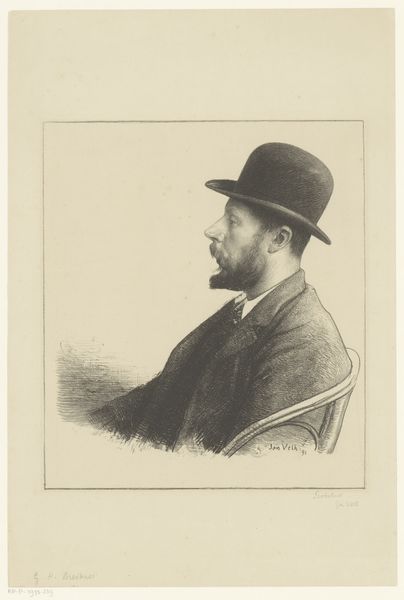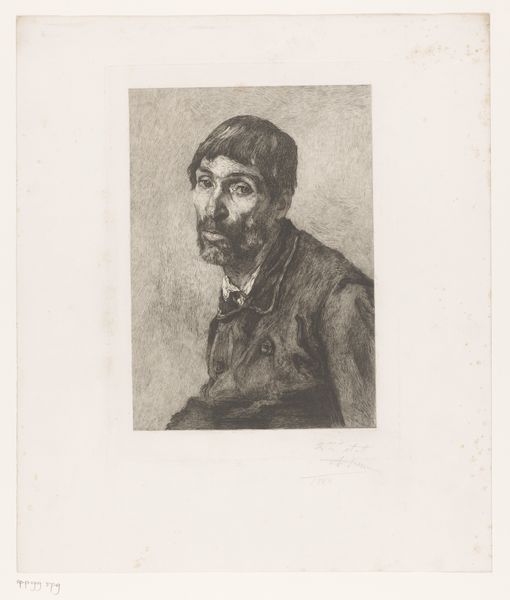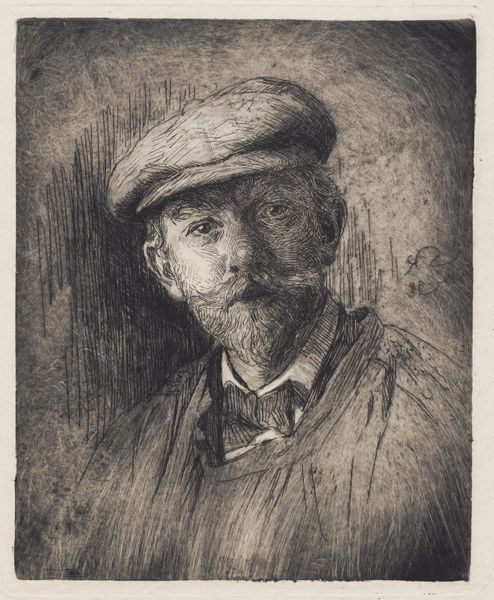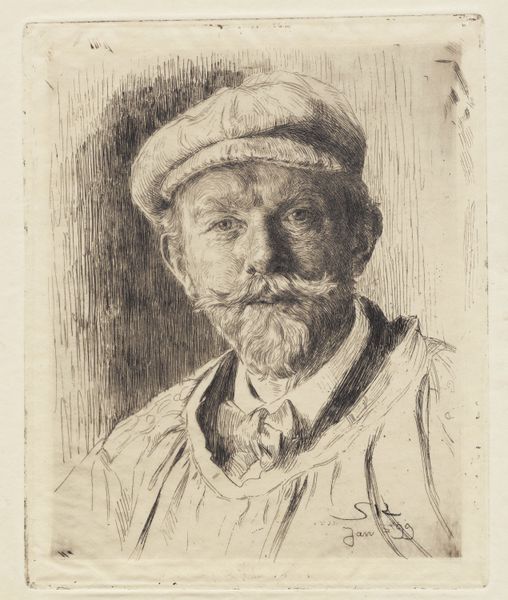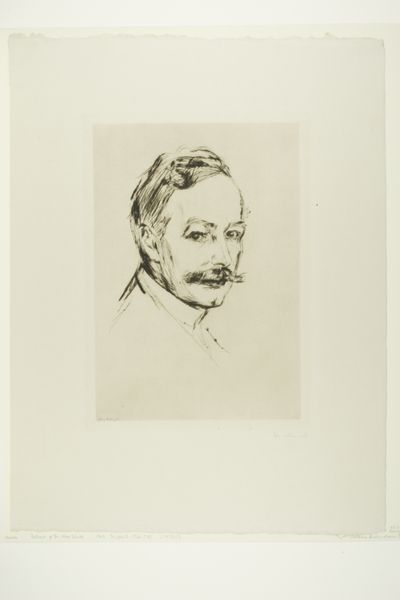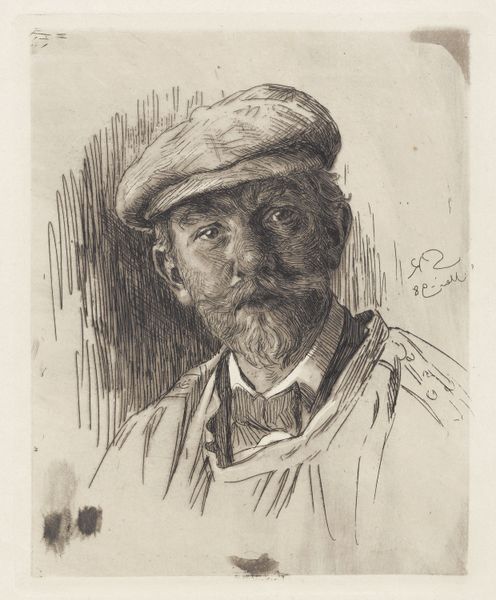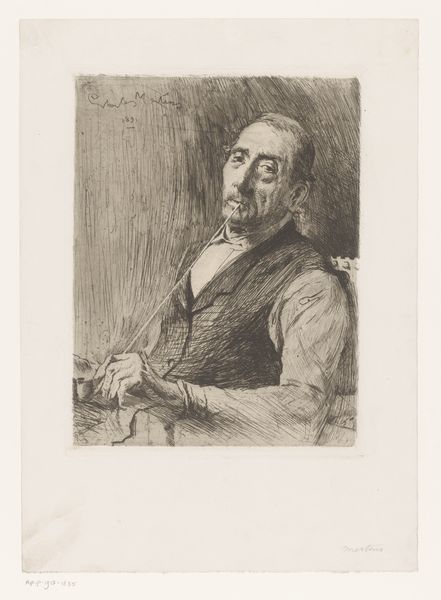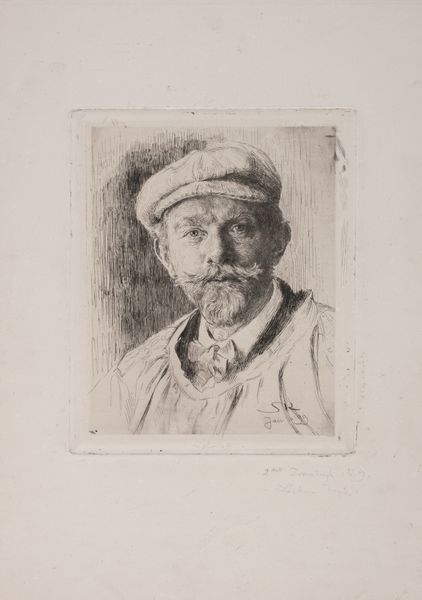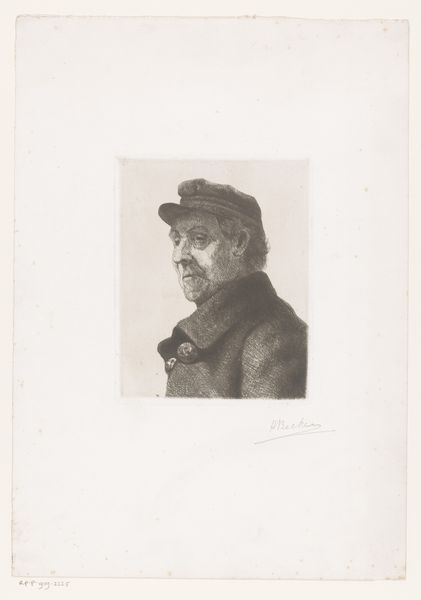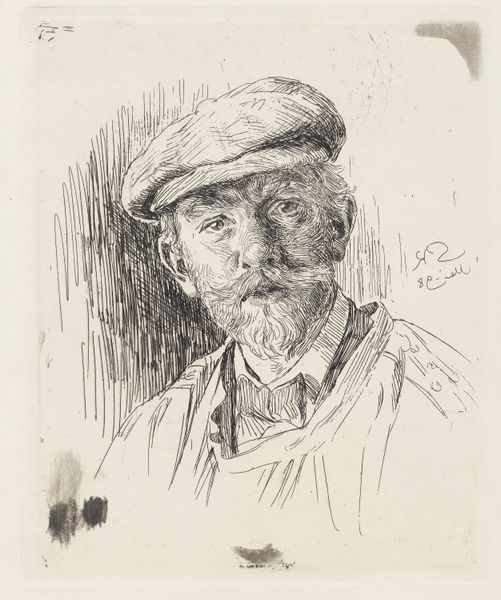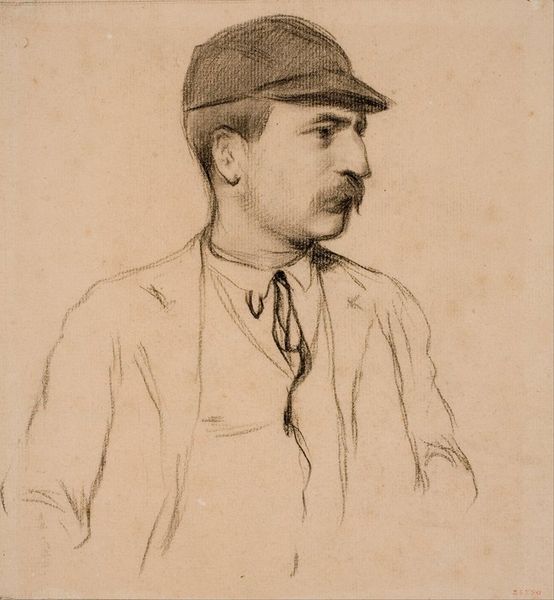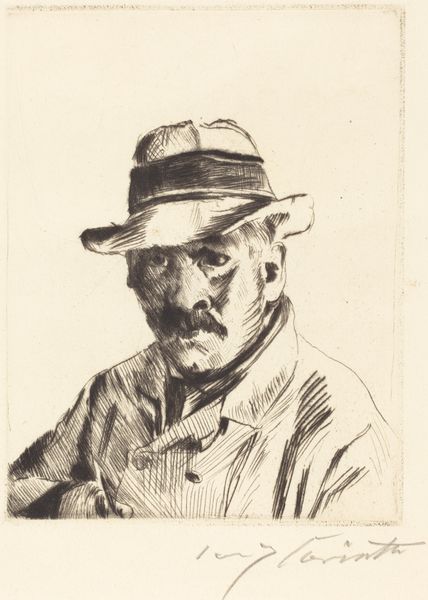
print, etching
#
portrait
#
self-portrait
# print
#
impressionism
#
etching
#
realism
Dimensions: height 157 mm, width 107 mm
Copyright: Rijks Museum: Open Domain
Editor: This is Frans Hermesdorf's "Self-Portrait with Beret," created between 1864 and 1904, an etching housed here at the Rijksmuseum. It feels so intimate, like a quick sketch capturing a fleeting moment. What do you make of it? Curator: Immediately, I'm drawn to the material processes involved in etching. Think about the copper plate, the acid baths, the labor inherent in each pull. This wasn't just about artistic expression, but also about the means of reproduction and circulation. It speaks to the democratization of art, doesn't it? Editor: Democratization? I hadn't considered that. Curator: Yes, prints like these made art accessible beyond the wealthy elite. Etching, in particular, was relatively affordable. And, look closer, at the cross-hatching. It looks almost hasty. Editor: Yes! That’s what strikes me too! It’s interesting because it creates a texture that's rougher, less polished than a typical portrait. Curator: Exactly! Hermesdorf seems less concerned with idealized representation and more focused on revealing the working methods. The very imperfections highlight the hand of the artist, the physicality of creation. Consider the contrast between the formal attire – the jacket and tie – and the more informal beret, suggesting a blending of societal roles. Do you see that tension reflected elsewhere in the image? Editor: Hmm, I think the choice of medium perhaps reinforces the tension you mentioned - high art or mere commodity? Curator: Precisely! So, this portrait is not simply about the artist’s likeness, but also a commentary on art's function, production, and consumption within a broader social context. Editor: I see your point, examining the piece in this way unveils some new facets about how artistic choices reflect the socioeconomic influences. Curator: And vice-versa. Art influences those same forces! Fascinating.
Comments
No comments
Be the first to comment and join the conversation on the ultimate creative platform.

